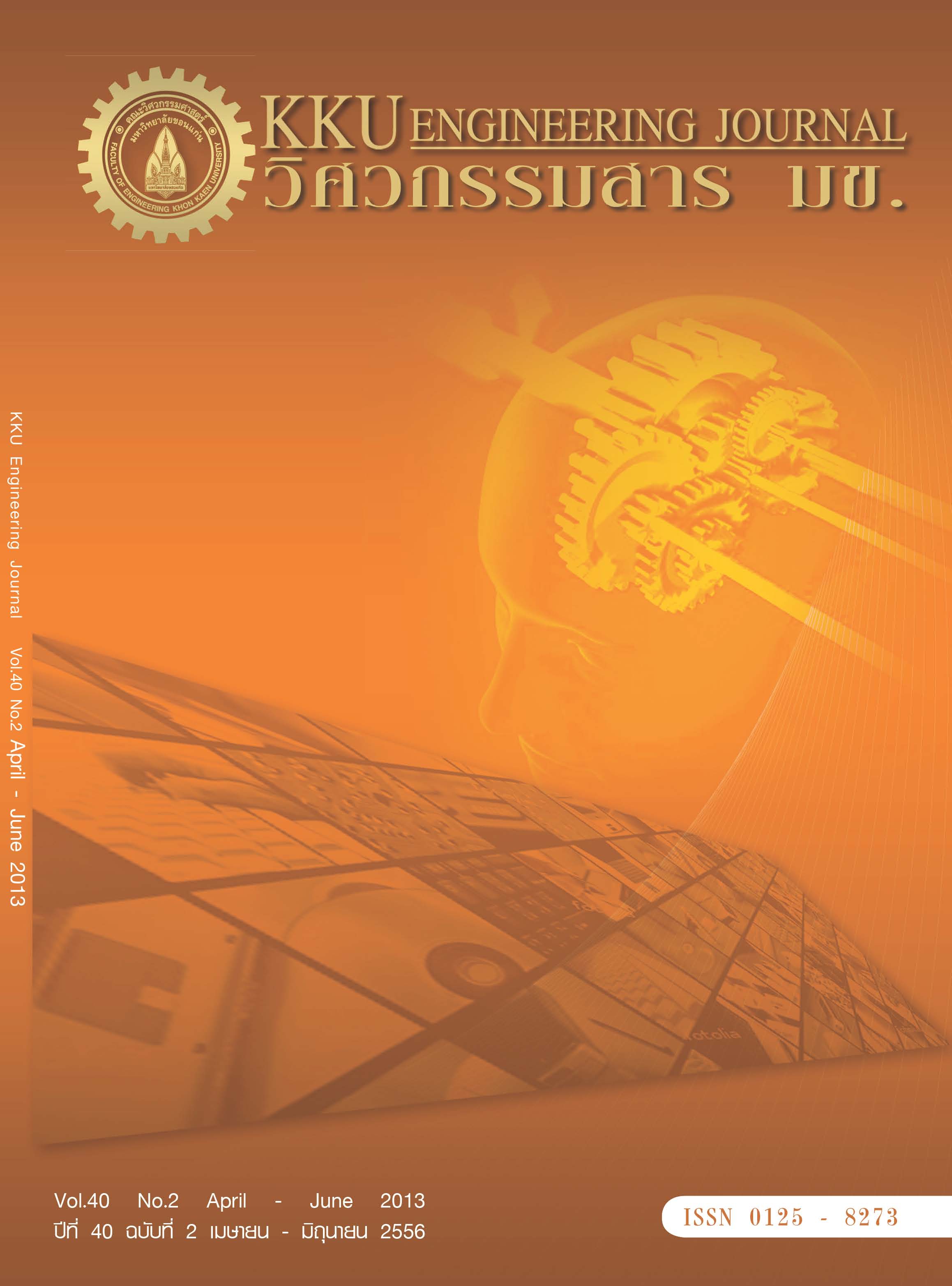The development of simulation process of air flow in rough terrain by using computational fluid dynamics to assess the wind energy potential : Case study at Lam Ta Khong
Main Article Content
Abstract
research studies the airflow at Lam Ta Khong upper reservoir areas at the height of 60 meters above ground
level. The surrounding areas are complex terrains. By creating a three-dimensional surface model and using
Computational Fluid Dynamics (CFD), we can identify areas with high airflow. The areas are suggested for installing
of wind turbines, which can produce the maximum energy per year. Parameters of the air that flows through to the
areas are calculated by fixing the incoming wind speed from 1 to 5 m/s. These wind speeds are the norm extracted from the measured data from the anemometer mast in Lam Ta Khong. The airflow is modeled to flow into Lam Ta
Khong. The results show that the highest wind speed is found at the top and toward the upwind face of the hill.
The airflow speeds up to 2.13 times the input wind speeds. In addition, the analysis of the turbulence kinetic
energy of the wind suggests that the upwind face has insignificant turbulence. The turbulence kinetic energy is
0.054J/kg at the location where the highest wind speed occurs. The turbulence kinetic energy increases when air
flows toward the lee side of the mountain, which is not suitable for a wind turbine installation. Unlike an airflow over
a smooth hill, it is concluded that the highest wind speeds and low turbulence can be found in locations around
the top and toward the upwind face of the hill are the areas. As a result, they are the most suitable areas to install
wind turbines.
level. The surrounding areas are complex terrains. By creating a three-dimensional surface model and using
Computational Fluid Dynamics (CFD), we can identify areas with high airflow. The areas are suggested for installing
of wind turbines, which can produce the maximum energy per year. Parameters of the air that flows through to the
areas are calculated by fixing the incoming wind speed from 1 to 5 m/s. These wind speeds are the norm extracted from the measured data from the anemometer mast in Lam Ta Khong. The airflow is modeled to flow into Lam Ta
Khong. The results show that the highest wind speed is found at the top and toward the upwind face of the hill.
The airflow speeds up to 2.13 times the input wind speeds. In addition, the analysis of the turbulence kinetic
energy of the wind suggests that the upwind face has insignificant turbulence. The turbulence kinetic energy is
0.054J/kg at the location where the highest wind speed occurs. The turbulence kinetic energy increases when air
flows toward the lee side of the mountain, which is not suitable for a wind turbine installation. Unlike an airflow over
a smooth hill, it is concluded that the highest wind speeds and low turbulence can be found in locations around
the top and toward the upwind face of the hill are the areas. As a result, they are the most suitable areas to install
wind turbines.
Article Details
How to Cite
Srinor, P., & Janon, A. (2014). The development of simulation process of air flow in rough terrain by using computational fluid dynamics to assess the wind energy potential : Case study at Lam Ta Khong. Engineering and Applied Science Research, 40(2), 247–254. retrieved from https://ph01.tci-thaijo.org/index.php/easr/article/view/19105
Issue
Section
ORIGINAL RESEARCH
This work is licensed under a Creative Commons Attribution-NonCommercial-NoDerivatives 4.0 International License.



